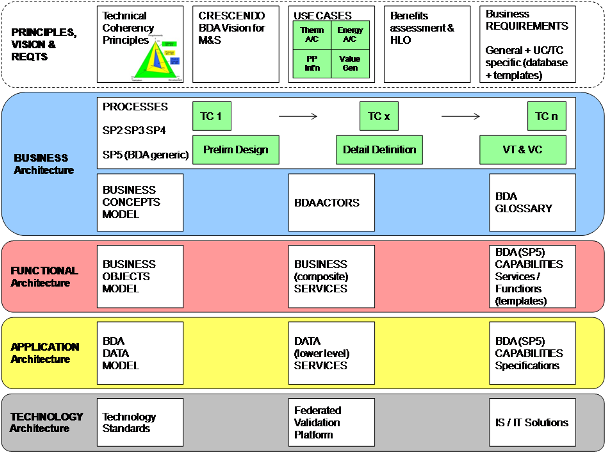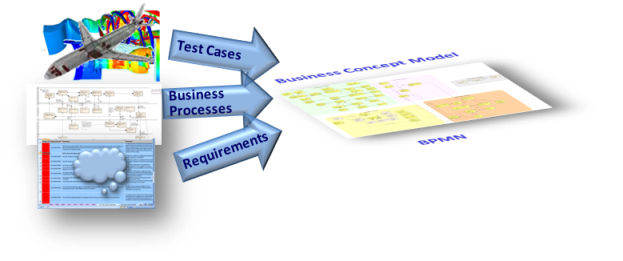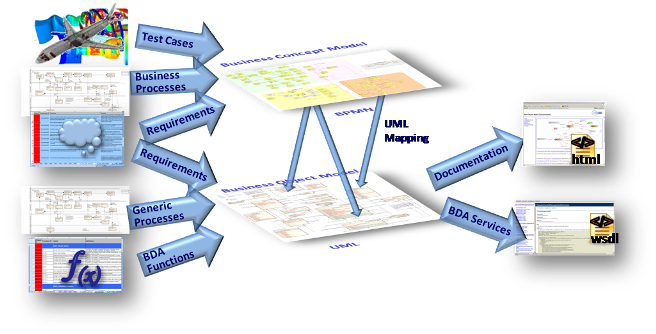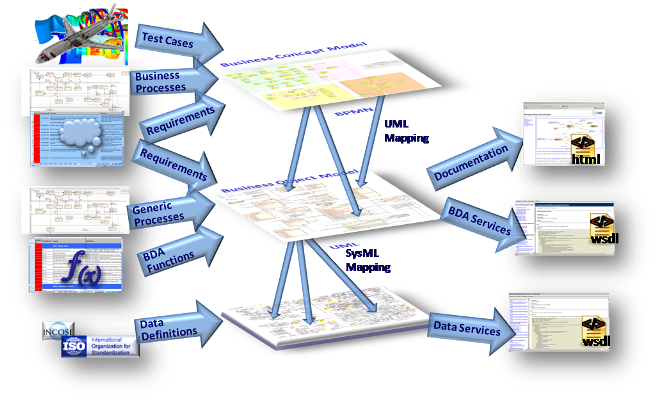Introduction to the Architecture Framework¶
The BDA Architecture is an enabler for conducting collaborative modelling and simulation amongst partners, whether these are teams within an organisation or partners in an extended enterprise. It facilitates managing the evolution of aircraft behaviour from concept to virtual test and certification. This is verified by the development of comprehensive demonstrations of industrial engineering test cases
The architecture provides the common language of collaboration that makes it possible for partners to capture the cross-organisation traceability of product and supporting information across the end to end development lifecycle, so allowing informed decisions based on a wealth of knowledge.
This common language is built on the international standards ISO 10303-233 (System Engineering) and ISO 10303-239 (Product Life Cycle Support (PLCS)).
It provides a communication mechanism to systems outside of the BDA environment because there are already a number of tools and implementations available that are based on these standards. Additionally, it provides an archive format for BDA data.
The BDA architecture is described in terms of four layers:
- The Business layer identifies the processes that represent the way end users are working in a BDA supported Modelling & Simulation context. The definitions and terminology defining the information are expressed in the language used by business domain experts (the end users). The information is conceptual. In other words, the information does not provide sufficient detail for implementation, but acts as a high-level requirement reference for the lower level information layers. This is captured in the Business Concept Model.
- The Functional layer identifies and organises the set of information entities and their behaviour for the BDA Business services and functions. This is consolidated into a single Business Object Model (the common language) which is mapped both to the Business Concept Model and to the Data Model.
- The Application layer specifies how the BDA services can implement the required functionalities. In order to ensure an open and modular architecture, the Data Model chosen for the BDA is a combination of the existing information standards ISO 10303-233 & 239.
- The Technology layer provides the organization of (information) technologies and solutions that could support a given BDA implementation.
These are explained in detail in the deliverables D5.1.1: BDA Architecture Framework, D5.1.2: BDA Architecture Specification and D5.1.6: Federated Validation Platform Specification
Business Concept, Business Object and Data: Layer Development¶
Business Concept Model¶
The Business Concept Model is used to define information at a business level and is referenced by the Business Concept Processes that show how the BDA will be used. The definitions and terminology defining the information are expressed in the language used by business domain experts (the end users).
The information is conceptual. In other words, the information does not provide sufficient detail for implementation, but acts as a high-level requirement reference for the lower level information layers.
The Business Concept Model is defined using the test cases, their business processes, and the requirements.
Business Object Model¶
The Business Object Model is a model of objects, properties, relationships and operations that represent business entities.
From a Business Object Model perspective, the Business Concept Model serves as the requirements for the information and semantics that need to be represented by a set of information entities and their behaviour. Other inputs are the requirements, generic processes, and also the BDA Capability functions and services (which are part of the Functional Layer of the Architecture framework).
The result is a formal information model specification in UML from which the BDA Data service specification can be extracted. Most BDA platforms implemented these BDA Services as web-services for which WSDL and XSD definitions were developed.
The Business Object Model is also seen from the BDA Data Model perspective (on the Application Layer), as an aggregation of entities in the BDA Data Model.
For more details see the Business Object Model Introduction
BDA Data Model¶
Each platform that wants to integrate with the BDA environment will have its own Data Model. In order to ensure an open and modular architecture, the Data Model chosen for the BDA is a combination of the existing information standards ISO 10303-233 and 239. This has the advantage that there are already a number of tools and implementations available that are based on these standards. It also provides a communication mechanism to systems outside of the BDA environment, and an archive format for BDA data. A SysML representation of the Business Object Model is formally mapped to the Data Model.
Section author: Judith Crockford



